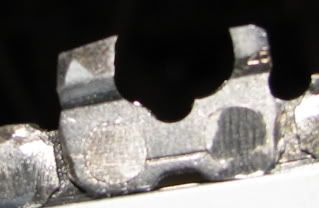noyb72
ArboristSite Member
Just wondering if it as important to keep the rakers the same shape as factory as it is to maintain the fatory angles on the cutters? I seem to make my rakers a little "longer" on the top every time I take them down. My chains cut fine, I'm just wondering if I can improve things by doing something diffrent with the rakers.
Thanks
Ron
Thanks
Ron







